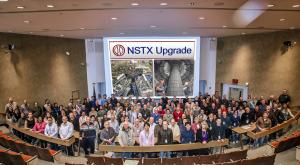World-class fusion research to resume on NSTX spherical tokamak
At the US Department of Energy's (DOE) Princeton Plasma Physics Laboratory (PPPL), world-leading fusion research resumes later this fall. After more than six years of planning and construction—including three years of building and 574,000 hours of labour—the National Spherical Torus Experiment-Upgrade (NSTX-U) is ready to play a critical role in the quest to develop fusion energy as a clean, safe and virtually limitless fuel for generating electricity.
The $94 million overhaul has made the machine the most powerful spherical tokamak in the world. The upgrade has doubled its heating power and magnetic field strength, lengthened its operation from one second to five seconds and increased its plasma performance by a factor of 10. The improvements create a flexible research platform that will enable some of fusion's most outstanding puzzles to be directly addressed.
"This achievement signifies the completion of an extremely successful challenge, which opens the door to a decade or more of exciting research," said PPPL Director Stewart Prager. "The world will now be watching to see if this experiment can serve to further improve our vision for future reactors."
The new machine passed stringent tests to reach construction completion. On 11 May 2015, operators produced 40,000 electron-volts from a second neutral beam—a device used to heat the plasma—to demonstrate the first step in doubling the heating power. Then, on 10 August, engineers produced a 100,000-amp plasma—the fuel for fusion reactions. The twin achievements easily met the Key Performance Parameters (KPP) that the project had to satisfy to be completed. "This is not a little spherical torus anymore," said Al von Halle, the head of NSTX-U engineering and operations. "This machine has 10 times the capability of the original NSTX."


